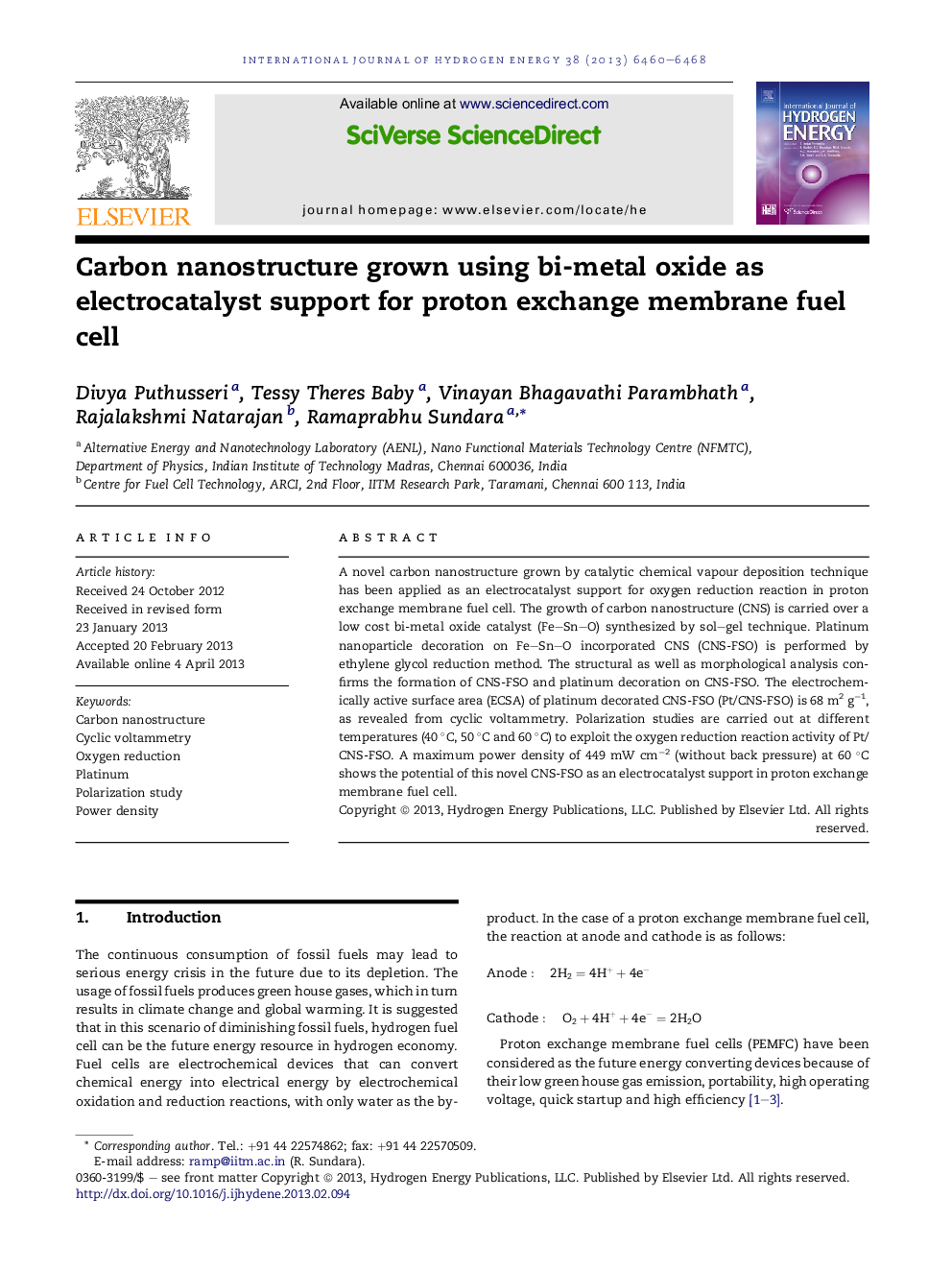| Article ID | Journal | Published Year | Pages | File Type |
|---|---|---|---|---|
| 1273761 | International Journal of Hydrogen Energy | 2013 | 9 Pages |
A novel carbon nanostructure grown by catalytic chemical vapour deposition technique has been applied as an electrocatalyst support for oxygen reduction reaction in proton exchange membrane fuel cell. The growth of carbon nanostructure (CNS) is carried over a low cost bi-metal oxide catalyst (Fe–Sn–O) synthesized by sol–gel technique. Platinum nanoparticle decoration on Fe–Sn–O incorporated CNS (CNS-FSO) is performed by ethylene glycol reduction method. The structural as well as morphological analysis confirms the formation of CNS-FSO and platinum decoration on CNS-FSO. The electrochemically active surface area (ECSA) of platinum decorated CNS-FSO (Pt/CNS-FSO) is 68 m2 g−1, as revealed from cyclic voltammetry. Polarization studies are carried out at different temperatures (40 °C, 50 °C and 60 °C) to exploit the oxygen reduction reaction activity of Pt/CNS-FSO. A maximum power density of 449 mW cm−2 (without back pressure) at 60 °C shows the potential of this novel CNS-FSO as an electrocatalyst support in proton exchange membrane fuel cell.
► Synthesis of carbon nanostructures (CNS) with helical morphology. ► Use of low cost bi-metal oxide (Fe–Sn–O) catalyst. ► Decoration of Platinum (Pt) nanoparticle on CNS-FSO (Pt/CNS-FSO). ► Measurement of ECSA of Pt/CNS-FSO and commercial Pt/C. ► Comparison of power density of Pt/CNS-FSO with Pt/C as cathode electrocatalyst.
